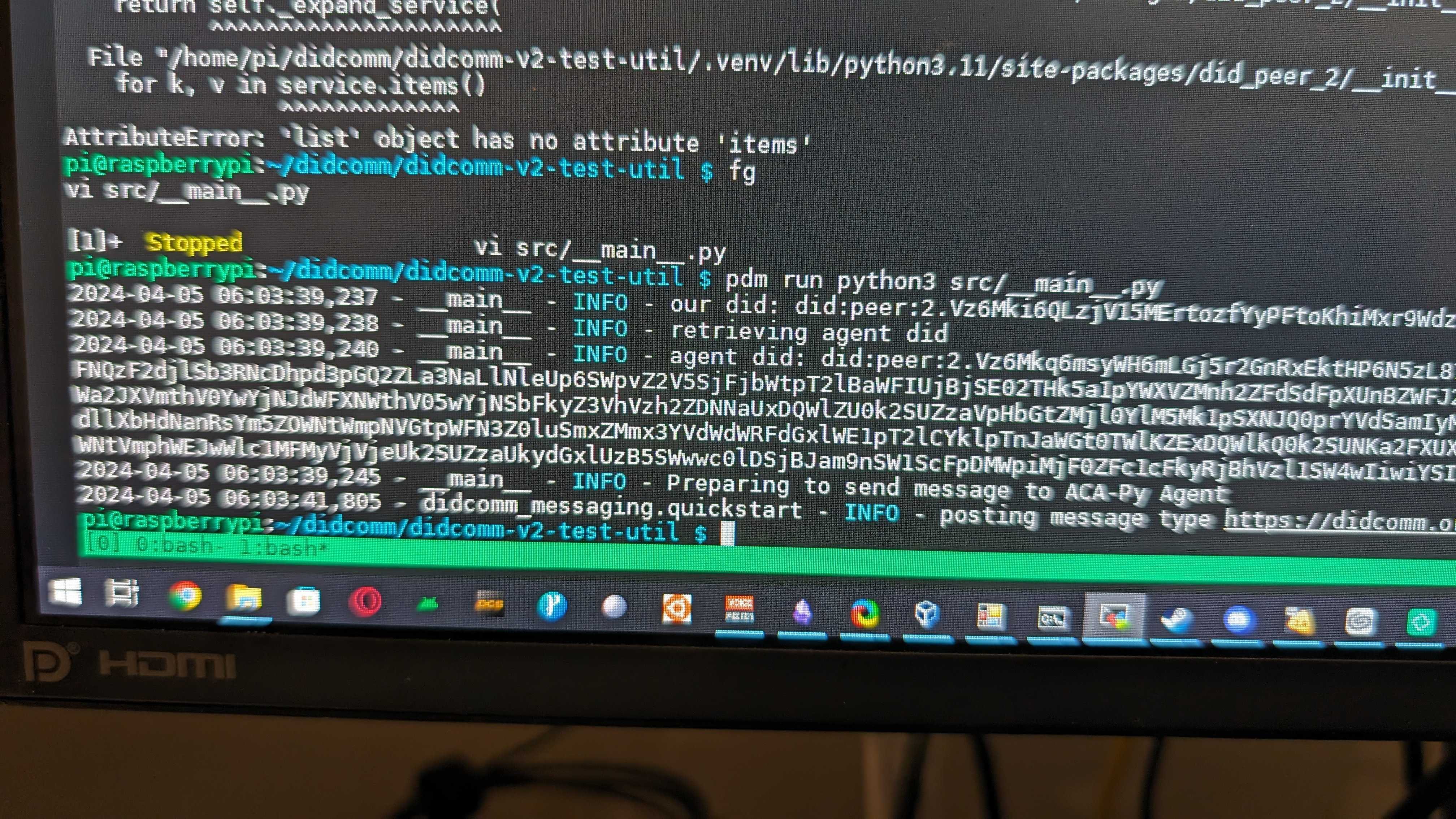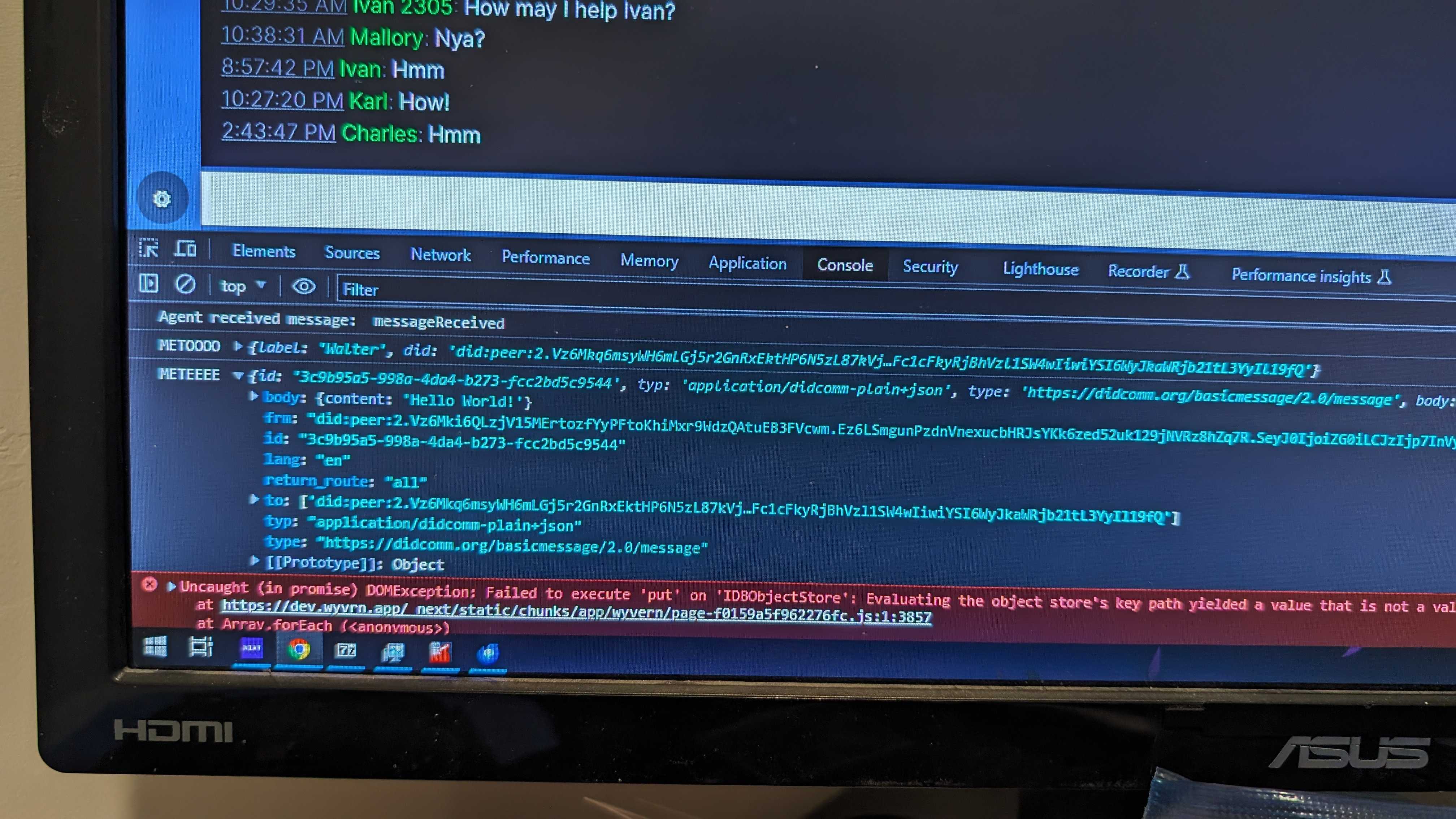DIDComm for IoT
Over the past couple of months, I’ve been talking to my colleague Sam Curren, who has pushed me to get more and more involved with DIDComm. In one of our recent conversations, Sam mentioned that it would be cool if we could use DIDComm with certain smart-home devices. Such as having a water sensor for plants sending you a message whenever your plants are running low (or out of!) water.
Now, I happen to have some Raspberry Pis lying around, and a couple of them are self-contained enough that they could be used with DIDComm all on their own. For example, this Raspberry Pi Zero W connected to an Inky pHAT from Pimoroni.
![Hi, my name is [insert name here] Picture of a Raspberry Pi Zero W with the PiSugar 2 battery and inky phat e-ink display attached](/blog/2024/didcomm-for-iot/images/1000021959.jpg)
At the time, there was no way to run DIDComm on a Raspberry Pi, let alone change the display over DIDComm., so I took the liberty of getting the DIDComm Messaging Python library to run on the Raspberry Pi of mine so that I could control devices and receive information from the pi over DIDComm.
First off, I know that the DIDComm Messaging repo is entirely written in python, so that should work fine. The problem occurs with one of it’s dependencies. The only dependency to my knowledge that is not written in python, is Askar. Building it for python was fairly trivial, so I built it, added it to project, and gave my example application a spin. The example application is based off of my diddy-bot repo.

Once the message is sent from the Pi, it’s time to see if it made it to our other did in the web browser.

Message success! And that about sums up this experiment. In the meantime, I’ve made preparations to show off what I’ve done at IIW and I’ll probably write a blog post on that experience as well. Including, a post talking about future DIDComm experiments in the land of IoT.